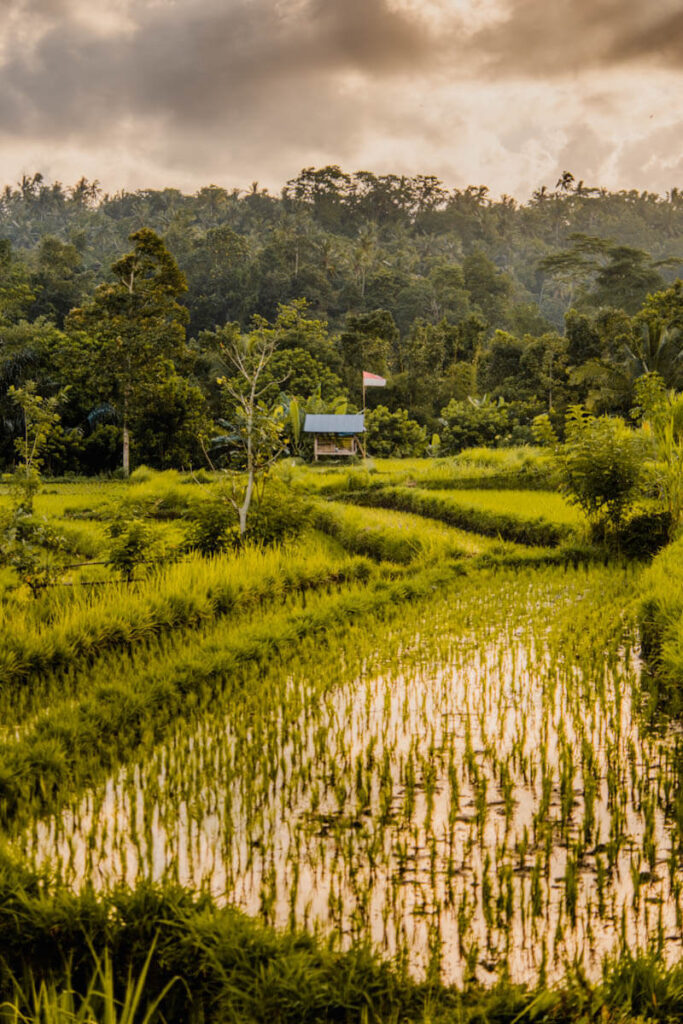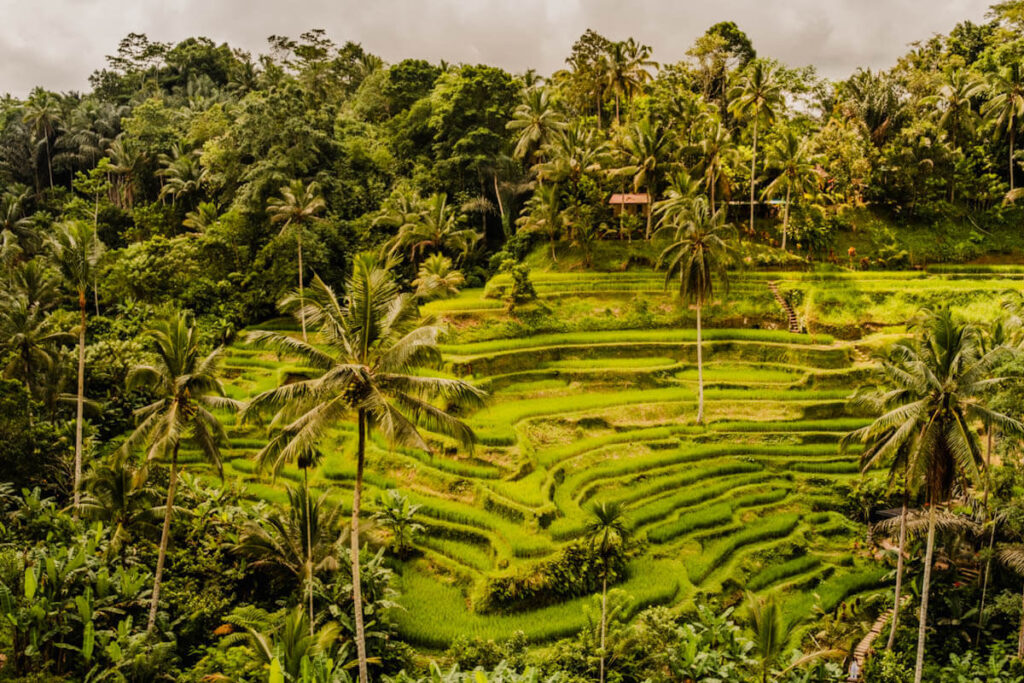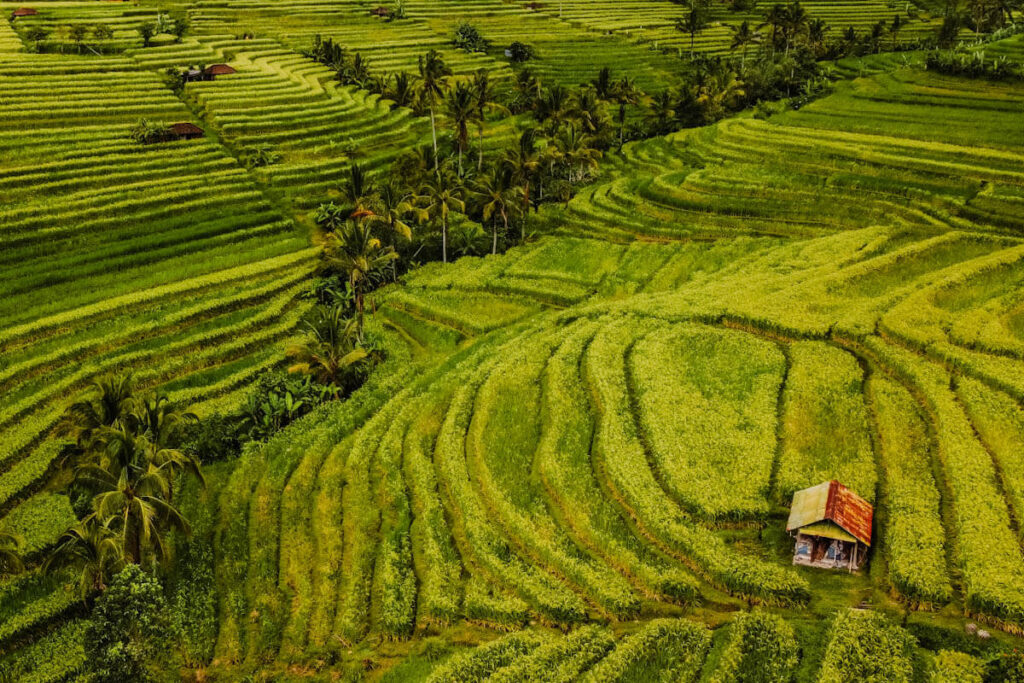On Bali, around 80,000 hectares of agricultural land are used for rice cultivation. Most rice fields (sawahs) can be found near volcanoes, on fertile land with abundant water. Since rice fields are widespread across the island, it’s not hard to find them. However, there are a few spots that really stand out to me: steep rice terraces, rice fields with beautiful backdrops, and fields where you can enjoy a peaceful walk. In this article, I’ll show you my personal pick of 4 beautiful places on Bali to visit rice fields.
Rice fields in Karangasem, East Bali
I’ll start with a region where you’ll find rice fields with a stunning backdrop: Karangasem. The rice fields in Karangasem may not be as famous as those in areas like Ubud and Jatiluwih, but they’re certainly no less beautiful. One more advantage: it’s much quieter here. Almost everywhere in Karangasem where you view rice fields, you can see Mount Agung in the background (like in the photo above), as the fields are located at the foot of the volcano. Just the sight of this majestic mountain adds a special feel. Driving along the roads in Karangasem, you’ll be in awe and want to stop at every corner. In my opinion, this is the most authentic place on Bali to visit rice fields.


Rice fields of Tegalalang
Tegallalang may have the most visited rice terraces on Bali. It’s truly stunning! These iconic rice terraces are famous for their steep, tiered structure. When it comes to photogenic terraces, this is definitely the place to be. However, it’s crowded… really, really crowded. At places like Alas Harum Bali, you can still find beautiful rice terraces, but photographing here means weaving through the crowds, Bali swings, and bird’s nests. Fortunately, there are some quieter spots, but they’re a bit harder to find. Is it still worth heading in this direction? Absolutely. You can easily walk from spot to spot along the narrow streets in search of the most beautiful shots.

Rice fields of Jatiluwih
The rice terraces of Jatiluwih are located in the heart of Bali. Since 2012, they’ve been listed as a UNESCO World Heritage Site as part of Bali’s cultural landscape. This heritage includes not only Jatiluwih but also the Subak irrigation system used for agriculture across Bali. Due to the large size of Jatiluwih (632 hectares), people are spread out across the area, making it feel much quieter than the Tegalalang rice terraces. Here, you’ll hardly find Bali Swings or other flashy photo spots. It’s truly a beautiful area to wander around and enjoy.

Rice fields of Kajeng & Juwuk Manis
The rice fields of Kajeng and Juwuk Manis are easily accessible in Ubud, though it may take a little effort to figure out exactly how to get there. It’s truly a breath of fresh air to escape the busy streets of Ubud for a while. While these rice fields may not be as impressive as those at the previously mentioned locations, they are definitely worth visiting. Even if it’s just to experience the contrast between the bustling life of Ubud and the tranquility of this place. Feeling inspired? Consider walking the Sweet Orange Walk Trail through this beautiful area.
